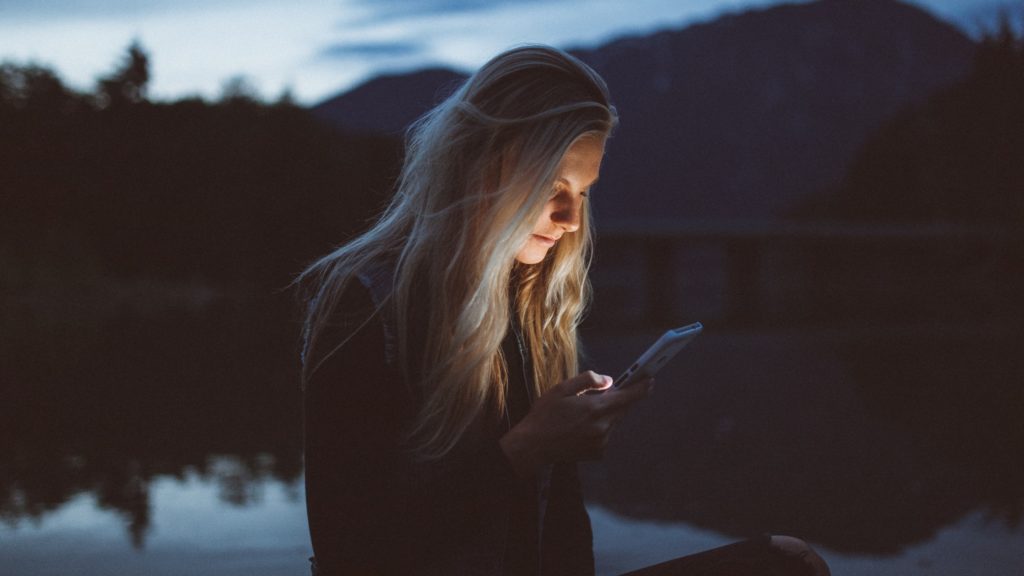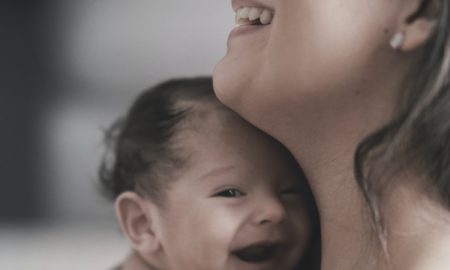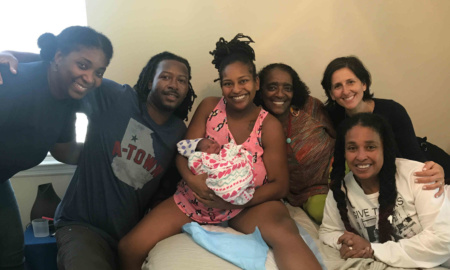I’m staying home right now.
So are many of my friends, family and colleagues. Most likely you are, too.
This may be by choice. It may be forced by circumstances and could be causing you terrible stress.
Some of my best friends – and some of my children – can't stay at home right now. They are ‘essential health workers.' Many are exhausted and incredibly stressed, knowing they're being exposed, and bringing that home to their families. There are also many other essential workers, not in health care, out on the frontlines.
This article is for everyone. It's about why being home, if you can, is so important and how it also helps those who can't stay at home. And it's about how we can all stay connected in a time of social distancing.
I hope truly knowing why you're at home right now lightens that burden a bit. If you can't stay home right now because economics just absolutely prevent it, or because your work is front lines then I hope this article also provides some light and support for you.
One thing that has to come out of this is knowing we're all in this together. Because actually, we are.
The Good, The Bad, and the Reality of “Staying Home”
Truth be told, I work from home, and I love alone time as a balance to my teaching, patient care, and years of homeschooling four kids who are now off into their own adult lives. For me, staying at home is not a huge change. I’m doing my usual: writing, teaching online, and seeing patients via telemedicine. These are all things that keep me feeling ‘connected’, of course punctuated by the real, live human visits with friends and family when time and work allow.
But for many, staying home means they've lost – or will as a result of staying home, lose – a job. It may mean your kids' schools have closed, you had no other childcare options, and you're now scrambling to make ends meet and meet your kids' needs. It may also mean the loss of daily interactions that are important for your mind and mood, and for some, this is not only connecting with colleagues at work; it’s the loss of real human contact at a therapy appointment, AA meetings, your synagogue, church, or mosque. For many with depression and anxiety predating COVID-19's appearance in our world, these connections, social outlets, and opportunities to get out of our homes meant getting out of our own puddle of thoughts and emotions.
They were lifelines.
Loneliness is a serious issue that so many people experience, and more often than might be suspected. A 2016 survey of more than 2000 Americans, conducted by the Harris Poll, found that 72% of Americans experience loneliness – and it's not just an occasional feeling; for at least a third of those surveyed, it's at least weekly.
Even for those of you who already were home ‘full-time,’ whether that’s how you normally do your job or because you’re the primary caretaker of children at home, social connections – and getting out of your own four walls – is part of a sanity plan.
We’re humans. As such, we’re pack animals. And as women, we’re triply primed to connect. We need connection – heart, mind, and soul – because it’s hard-wired in us to have it. Further, being home full-time with your partner, or kids who are used to school and constant contact, can be seriously overwhelming, exhausting, stressful, and challenging. My husband and I both work from home, together. It’s not always peachy all the time. Sometimes we need space. Our home allows it. But not everyone's does. Yours may not. So finding ways to be together and have space can be a challenge – but an important one to address. Conversely, there's a very good chance you're non-partnered whether by choice or circumstances. Social connections may be all the more important. And having homeschooled four kids, I certainly know the importance of getting out of the house, getting together with other moms and getting my kids together with other kids.
The potential for increased loneliness, anxiety, and depression right now, if we become socially isolated, is truly unfathomable.
It helps to have a WHY – and creative ways to connect.
The Why
I can’t emphasize enough how important it is to, simply put, stay at home right now. No doubt you’ve heard the term ‘flattening the curve.’ It will be a new part of our lexicon for weeks, if not months or a year to come. This important public health move, which in truth we should have been preparing for full-on back in early January when it was obvious that COVID-19 was spreading in China as ferociously, rapidly, and as potentially dangerously as the wildfires that had just decimated thousands of acres – and an unfathomable number of people's homes and lives – in Australia. The COVID-19 wildfire is still spreading, not just in the actual numbers of people who have gotten sick, but in the hiding-in-plain-sight way that the SARS-CoV-2 virus, the one that causes the COVID-19 infection, can keep infecting. The latest data suggests that asymptomatic, infected people may be the ones driving the spread of SARS-CoV-2 much more than had been recognized until very recently. And because of unconscionably slow access to testing, we just really don’t know how many of us are already infected.
While as parents, grandparents, and health professionals alike, we’re all sighing a bit of relief that the infection seems to be, with rare exception, sparing our children, it’s become evident that they, like the rest of us, are reservoirs of virus. In fact, it’s now estimated that for every one test that comes back positive for COVID-19, there are five more infected people who are asymptomatic carriers of the infection, invisibly sharing it. These aren’t OTHER people. It’s each of us. It’s you. It’s your mother-sister-daughter-father-husband-son-best friend-doctor-dentist-grocer-postal worker-and everyone and anyone else. Most of us will never have a symptom. Not a sniffle. Some of us will have symptoms so mild that we brush them off as a slight cold. But those who are high risk can get sick. Really really sick. Who’s at high risk? A shocking 40% of the American population meets that definition with our high rates of chronic disease. And while most pregnant women and children won’t get sick, a few will. And a few of those will get very sick. Or worse.
We really do need to stay home. NO just having a small dinner gathering. Getting your nails done. Going to the bookstore. No kids’ play dates. Violin lessons. Spend-the-nights. The ‘no list’ goes on. And it’s really scary just how much we shouldn’t be doing right now. The YES things include getting groceries and other essentials (i.e., medications, house supplies), but making as few trips to the grocery (or any other) store as possible. I’ve told my 20-somethings: no house shows, no parties, no bars, clubs, or concerts. I’ve actually been grateful for policy decisions to close these venues because I don’t have to worry about my kids going to them.
Not so much because of their risk of getting sick, but because my partner of 36 years – their dad – is a 63-year old man. He’s technically in the high risk category for this thing. And my vulnerability at the thought of something happening to him is a constant reminder to me of the vulnerability of someone in each of your lives. I want my kids to do the right public health thing to protect us all. And I’m asking you and yours to do the same. So is every government and medical organization on the planet.
My hope is that when this is over, each of us asks the question, “Did we all just overreact, because it wasn’t as bad as we thought it was going to be.” That means we’ll have succeeded – for this year, this season. Not for the thousands who have already lost their lives, the tens of thousands, for example, in Italy, who have really suffered (or the physicians who have had to face Sophie’s Choice level decisions about patient care) – but successes in stemming this, successes for the ones that didn’t get sick but that might have had we not gone into deep social distancing.
Social Distancing ≠ Social Isolation (or at least it doesn't have to)
Here’s the thing: social distancing doesn’t have to mean social isolation. I’ll admit it: I was a late and critical adopter of digital devices. When so many households had a computer for everyone, we had one for the family and I had one just for my work. We still don’t each have a tablet, and I typically go days without charging my iPhone. My kids know, if they can’t reach me, go through dad because he keeps his phone charged. I bristled at Facebook's glib use of the word ‘friend’ – a term I take very seriously with a sort of life and death all-in approach to those who I consider in that category in my life, and don’t even start me on Instagram.
But over the years, I’ve gently and slowly adapted to and even adopted social networking tools into my daily life (though even as I type, my phone is somewhere in my house, uncharged!). My work life and my friendships and family connections, which include my closest people in NYC, Boston, LA, North Carolina, Tennessee, and a few other places – the closest over 2 hours from me (one daughter lives an hour away, so close enough for more real time visits) now revolve around or depend on social networking tools. I FaceTime with my grandkids regularly between visits every few weeks, as they also live a couple of hours from my home in Western Mass. And now I think that, in this time of intensive social distancing, these tools can become a lifeline. It’s why I’m writing to you now. To remind you, that even if you are completely alone at home, you’re not alone. You’re not alone in facing that, and you’re not alone in the world. Just here in this email thread are nearly 100,000 other people, mostly women, many moms, all in it together.
And you have a purpose. You are part of something big and important. You are flattening the curve. This is a real thing that, based on statistical analysis and projections, really is our only option for preventing tens of millions of cases, millions of hospitalizations we do not have the capacity to manage, and an untold number of deaths.
The Washington Post did a really cool article in which they have simulations of what this all looks like. The article states simply: If people are less mobile and interact with each other less, the virus has fewer opportunities to spread.
But we don’t have to interact less. We just have to interact less in person. For now. Maybe for awhile. Not forever!
What can you do instead?
- First, a kinder way to think of this time is as ‘sheltering at home.” I just find that gentler.
- Call 2 friends or family members every-single-day. Or better yet – FaceTime them – every day. They’ll appreciate the check in, and it keeps you connected.
- Create a Zoom Book Club or do it on another platform, like Google Hangouts. You can see each other on Zoom, interact, and hang out there for a long time. Daily even.
- Try the app my millennial daughter told me about called House Party – it allows you to gather a group online, play games, and hang out.
- Netflix also has a feature where you can simultaneously watch a movie at a distance – and chat while you're watching
- Create small online AA, religious, or other meetings to keep connected with the support networks that have been your glue
- Create a friends and family Facebook page – share funny photos from home, videos, and commit to staying connected several times every day.
- Do therapy online if you’ve been working with someone
- For kids, old enough, create a Zoom or Google hangout, teach them how to play Scrabble, chess, double-solitaire, or another game online with a friend – or a grandparent who is at home at a distance and would love that!
- Listen to books on Audible with your kids – it's also a sneaky way to get some work done while hanging out with them!
Also, to make this time a bit easier on you:
- I like to get ‘dressed for work’ everyday – none of that working in pajamas or yoga clothes for me. Find your balance. If you’ve been going out to an office every day, the yoga clothes and slippers might be a welcome relief; but if being in PJs or the like feels frumpy, keep getting dressed – like it’s office casual.
- Keeping a routine really helps. Normal wake time, bedtime, and stay engaged during the day. Over the next few days I'll share my personal ‘work from home' routine, and I'll share my typical routine from when I homeschooled my kids – I'll post those on my Instagram and Facebook pages.
- Don’t get lost in endless screen time. Sure, catch up on a favorite show or binge watch now and then, but too much TV is depressing. Do things like have personal dance parties, read books that have been gathering dust even if you don’t start a book club, take up knitting, macrame, or another easy craft (supplies can be ordered online).
- Use this as a time to build in some more self-care if you're able. Get a little extra sleep, grab that nap, take that soak in the tub, do that home facial, read that novel – or write one!
- Eat regularly – and if you've always wanted to learn to cook – it's a great time – though you might have to be creative with ingredients depending on what's in your local stores and pantry.
- Exercise – even if it's a single or double round of the New York Times 7-minute workout every day, exercise helps prevent and treat depression.
- Take walks. At this time, unless you know you're sick, you can still get out and walk. You can wave to your neighbor and say hi at a distance. Get fresh air, sunshine, vitamin D. It's really good for the soul – and your immune system.
- Start a journal. These are certainly some weird times worth remembering ‘for the grandkids!'
- Do “virtual' good deeds. I just sent a candle and some chocolates to my daughter on lockdown in LA. I'm volunteering for telemedicine primary care clinic hours for a health system that's medically short-handed right now. If you have the energy to give, it's an amazing medicine that gives back unexpectedly.
Have kids at home full time right now and don’t know what to do about their education? Social time? Immune system? Stay tuned for more on that coming soon. Pulling your hair out being home full time with kids? Cut yourself some slack and allow good quality screen time for a couple of hours a day so you get a break. If you have a partner, trade kid duty so you each get down time. This is a time for smart and loving parenting, and making lemonade out of lemons parenting, not perfect parenting. Actually, we never have to be perfect parents. And even if you were, your kids still won’t think so!
But I Don't Have Symptoms and Neither Do My…
(friends, my kids, my parents, my church group members, my book club…)
And remember, “I don’t have symptoms,” or “They don’t have symptoms” is irrelevant. Everyone is a possible infection vector right now. That’s why none of us is an exception to the stay at home rule unless you’re an essential health care worker or other member of society we all depend on for access to services. In that case, thank you thank you, for doing your part in going out everyday, showing up everyday, and taking risks for all of us everyday.
Don’t have a fever and think it’s just a cold? That’s what happened in one of my dear friend’s medical practices two weeks ago. Gentleman comes in, no fever. Cold symptoms. Sent home. Come back in. cold symptoms, no fever, difficulty breathing. Diagnosed with pneumonia. Let’s just do a SARS-CoV-2 test because he’d recently been traveling. POSITIVE. The man has had not only numerous contacts in this medical office, but is a public figure in the community, with thousands of daily close contacts every week! Weird that he had no fever? Actually, according to studies from China early on in the outbreak, 44% of hospital admissions for symptoms had – guess what – no fever!
So can you ever get together with people? In towns/cities/counties on lockdown, any gathering may be prohibited, and in fact, can be considered a misdemeanor; for example, in California counties on lockdown the order says that, “all public and private gatherings of any number of people occurring outside a single household or living unit are prohibited.” ff you have a dependent family member, or neighbor who needs your help, by all means, drop off food, help them get their medications. But keep your distance to 6 feet apart. Medical and other essential appointments are considered acceptable.
It’s possibly okay to have one or two people you’re really close to who feel safe to get together with. But there must be an agreement to keep it to just the two or three of you and that’s it! That also means if they have a partner or kids, their partner or kids aren’t also getting together with other people. The circle has to be tight and closed and not require going out too far, either. And don’t do this if you have high risk people at home or if they do, because any of you can be a carrier. But re-read above if you are on a legal lockdown.
When we do have to interact in person (that grocery store trip you’ll inevitably have to make), keep a healthy distance from each other. Six feet is recommended. I’d err toward the latter, but don’t freak if paying for your groceries requires the former. Make sure to wear a mask. And wash your hands.



